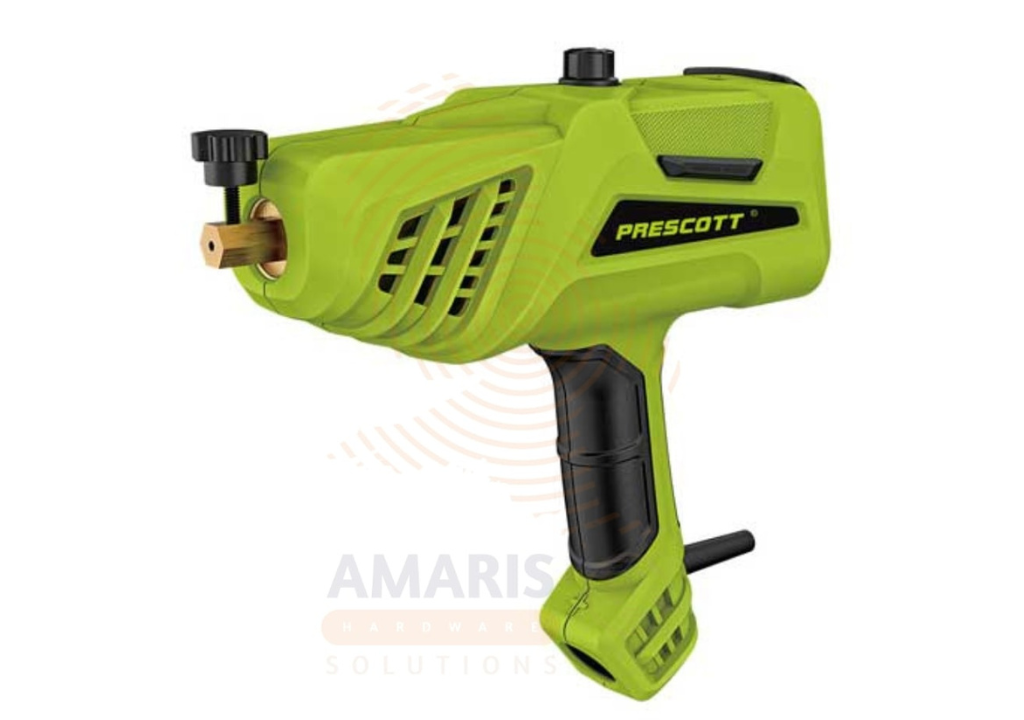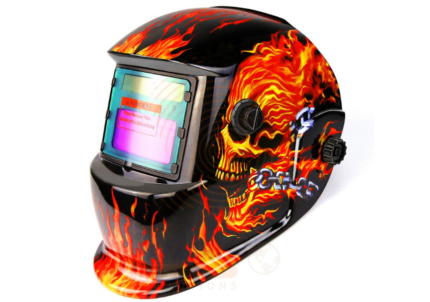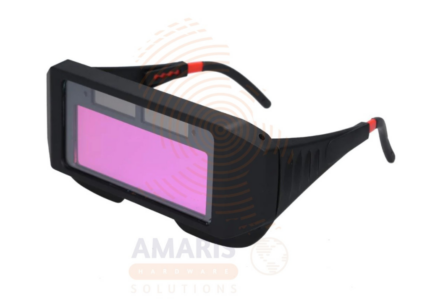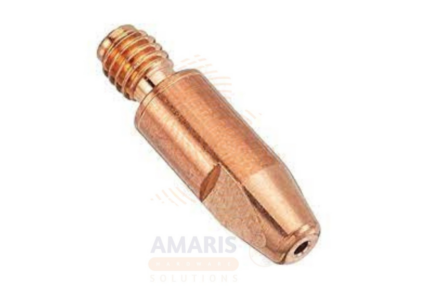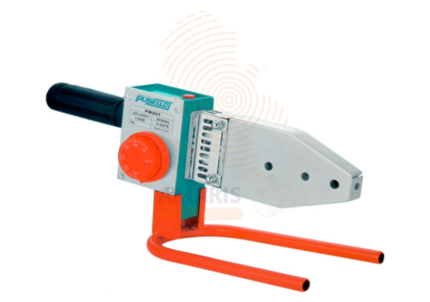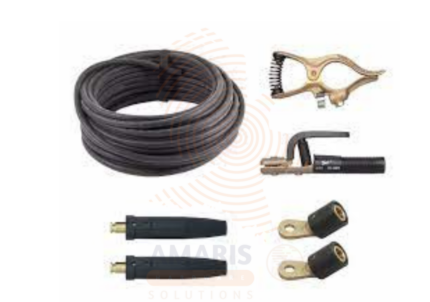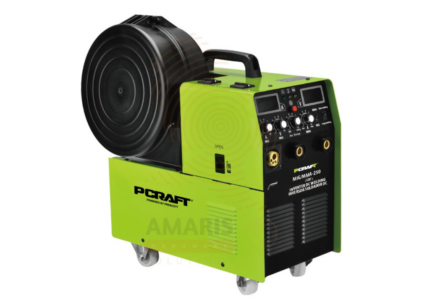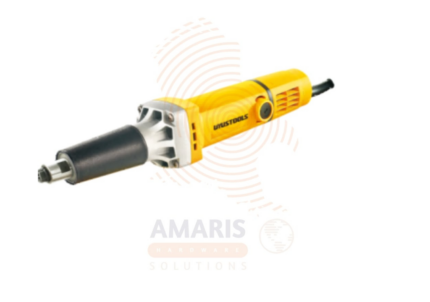
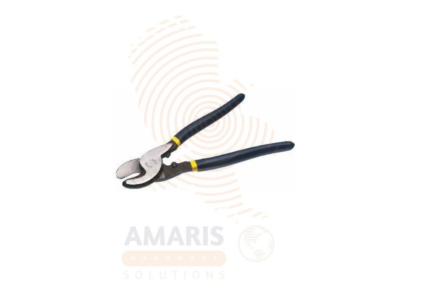
Hand-held Portable ARC Welding Machine – Welder Gun
$78.85 Original price was: $78.85.$74.91Current price is: $74.91.
A Hand-held Portable ARC Welding Machine – Welder Gun, also known as a welder gun, is a compact and mobile device designed for electric arc welding applications. This tool typically consists of a power source, electrode holder or gun, and necessary control components integrated into a portable unit. The machine generates an electric arc between a consumable electrode and the workpiece, producing the heat needed to melt and fuse the metals being joined. The hand-held nature of the device allows for ease of maneuverability and flexibility, making it suitable for welding in various locations and positions. These welding machines are commonly used in construction, fabrication, repair, and other industrial settings where a versatile and portable welding solution is required.
Table of Contents
ToggleHand-held Portable ARC Welding Machine – Welder Gun
Uses
-
Construction and Fabrication:
-
Welding of structural components in buildings, bridges, and other infrastructure projects.
-
Fabrication of metal frames, beams, and supports.
-
-
Repair and Maintenance:
-
On-site repairs for machinery, equipment, and vehicles.
-
Patching or reinforcing metal structures in the field.
-
-
Automotive Repair:
-
Welding components in automotive repair and restoration.
-
Repairing metal parts of vehicles, trailers, and other transportation equipment.
-
-
Shipbuilding and Marine Repairs:
-
Welding in shipyards for the construction and repair of ships and offshore structures.
-
-
Agricultural Machinery:
-
Repair and maintenance of farm equipment and machinery.
-
Construction of metal structures for agricultural purposes.
-
-
Home and Hobby Projects:
-
DIY metalwork projects for hobbyists and home improvement enthusiasts.
-
Repairs and modifications to metal items around the house.
-
-
Pipe Welding:
-
Welding of pipelines for various industries, including oil and gas, water supply, and more.
-
-
Manufacturing:
-
Welding in small-scale manufacturing processes for the production of metal goods.
-
-
Artistic and Sculptural Welding:
-
Creating metal sculptures and artistic pieces.
-
Custom metalwork for artistic and aesthetic purposes.
-
-
Emergency Repairs:
-
Rapid on-site repairs during emergencies or breakdowns.
-
Quick fixes in situations where transporting larger welding equipment may be impractical.
-
Safety Precautions
-
Protective Clothing and Equipment:
-
Wear appropriate personal protective equipment (PPE), including a welding helmet with a suitable shade, flame-resistant clothing, gloves, and safety boots.
-
-
Eye Protection:
-
Always wear a welding helmet with a proper shade to protect your eyes from harmful ultraviolet (UV) and infrared (IR) radiation emitted during welding.
-
-
Ventilation:
-
Ensure adequate ventilation in the welding area to disperse fumes and prevent the accumulation of hazardous gases. If working indoors, use local exhaust ventilation or wear a respirator if necessary.
-
-
Fire Safety:
-
Keep a fire extinguisher nearby and be aware of the location of emergency exits. Remove flammable materials from the welding area.
-
-
Electrical Safety:
-
Inspect the welding machine and cables for any damaged insulation. Repair or replace damaged components before use.
-
Ensure proper grounding of the welding machine to prevent electric shock.
-
-
Work Area Safety:
-
Clear the work area of clutter and ensure it is well-organized.
-
Mark off the welding area to prevent unauthorized access.
-
-
Positioning:
-
Maintain a stable and comfortable working position to avoid accidental contact with the electrode or molten metal.
-
-
Emergency Procedures:
-
Know the location of emergency shut-off switches and emergency response procedures.
-
Be familiar with first aid measures for burns and injuries related to welding.
-
-
Inspect Equipment:
-
Regularly inspect the welding machine, cables, and connections for signs of wear or damage. Replace any faulty components.
-
-
Training and Certification:
-
Ensure that operators are adequately trained and certified in the use of the welding equipment.
-
Follow the manufacturer's guidelines and instructions for the specific welding machine being used.
-
-
Safe Handling of Gas Cylinders:
-
If using gas cylinders, secure them in an upright position and keep them away from heat sources.
-
Use appropriate regulators and check for leaks before starting the welding process.
-
-
Communication:
-
Establish clear communication with others in the vicinity, especially in noisy environments, to coordinate safe working practices.
-


 Acrylic Sealants
Acrylic Sealants Construction Adhesives
Construction Adhesives Double-Sided Tape
Double-Sided Tape Duct Tape
Duct Tape Electrical Tape
Electrical Tape Epoxy & Resins
Epoxy & Resins Masking Tape
Masking Tape
 Automotive Wrenches & Socket Sets
Automotive Wrenches & Socket Sets Battery Chargers & Jump Starters
Battery Chargers & Jump Starters Car Jacks & Stands
Car Jacks & Stands Car Wash & Detailing Products
Car Wash & Detailing Products Diagnostic Tools
Diagnostic Tools Tire Inflators
Tire Inflators Vehicle Lighting
Vehicle Lighting Oil & Lubricants
Oil & Lubricants
 Adhesives & Sealants
Adhesives & Sealants Bricks & Blocks
Bricks & Blocks Cement & Concrete
Cement & Concrete Drywall & Plaster
Drywall & Plaster Flooring (Tiles, Wood, Laminate)
Flooring (Tiles, Wood, Laminate) Lumber & Plywood
Lumber & Plywood Paints, Primers & Coatings
Paints, Primers & Coatings Insulation Materials
Insulation Materials Roofing Materials
Roofing Materials
 Circuit Breakers
Circuit Breakers Electrical Cables & Wires
Electrical Cables & Wires Switches & Sockets
Switches & Sockets Fuses & Relays
Fuses & Relays Connectors & Terminals
Connectors & Terminals Electrical Boxes & Panels
Electrical Boxes & Panels Conduit & Fittings
Conduit & Fittings Lighting Fixtures & Bulbs
Lighting Fixtures & Bulbs Extension Cords & Power Strips
Extension Cords & Power Strips
 Anchors
Anchors Bolts
Bolts Clips & Clamps
Clips & Clamps Screws
Screws Nuts
Nuts Washers
Washers Rivets
Rivets Nails
Nails Threaded Rods
Threaded Rods
 Hammers
Hammers Measuring Tools (Tapes, Levels, Calipers)
Measuring Tools (Tapes, Levels, Calipers) Screwdrivers
Screwdrivers Pliers & Cutters
Pliers & Cutters Saws & Blades
Saws & Blades Chisels & Punches
Chisels & Punches Allen Keys & Hex Keys
Allen Keys & Hex Keys Ratchets & Socket Sets
Ratchets & Socket Sets Wrenches & Spanners
Wrenches & Spanners
 Power Tool Accessories (Blades, Bits, Discs)
Power Tool Accessories (Blades, Bits, Discs) Rotary Tools
Rotary Tools Saws (Circular, Jigsaw, Reciprocating)
Saws (Circular, Jigsaw, Reciprocating) Drills & Drivers
Drills & Drivers Grinders & Sanders
Grinders & Sanders Heat Guns
Heat Guns Nail Guns
Nail Guns Impact Wrenches
Impact Wrenches Batteries & Chargers
Batteries & Chargers
 Pipes & Fittings (PVC, Copper, PEX)
Pipes & Fittings (PVC, Copper, PEX) Plumbing Tools
Plumbing Tools Pumps & Motors
Pumps & Motors Sealants & Adhesives for Plumbing
Sealants & Adhesives for Plumbing Valves & Taps
Valves & Taps Water Heaters
Water Heaters Drainage Systems
Drainage Systems Faucets & Fixtures
Faucets & Fixtures Hoses & Tubing
Hoses & Tubing
 Hinges & Latches
Hinges & Latches Hooks & Brackets
Hooks & Brackets Window Hardware
Window Hardware Chains & Cables
Chains & Cables Casters & Wheels
Casters & Wheels Shelving & Storage Systems
Shelving & Storage Systems Door Handles & Locks
Door Handles & Locks Drawer Slides & Cabinet Hardware
Drawer Slides & Cabinet Hardware
 Personal Protective Equipment (PPE)
Personal Protective Equipment (PPE) Respirators & Masks
Respirators & Masks Safety Glasses
Safety Glasses Safes
Safes Security Cameras
Security Cameras Gloves
Gloves Helmets
Helmets Ear Protection
Ear Protection Fire Safety Equipment
Fire Safety Equipment Locks & Padlocks
Locks & Padlocks Motion Sensors & Alarms
Motion Sensors & Alarms
 Garden Fencing
Garden Fencing Garden Furniture Hardware
Garden Furniture Hardware Lawn Mowers
Lawn Mowers Trimmers & Edgers
Trimmers & Edgers Shovels & Spades
Shovels & Spades Rakes & Hoes
Rakes & Hoes Pruning Shears & Loppers
Pruning Shears & Loppers Watering Systems (Hoses, Sprinklers, Nozzles)
Watering Systems (Hoses, Sprinklers, Nozzles)
 Interior Paints
Interior Paints Paint Brushes & Rollers
Paint Brushes & Rollers Paint Strippers & Thinners
Paint Strippers & Thinners Paint Trays & Accessories
Paint Trays & Accessories Exterior Paints
Exterior Paints Spray Paints
Spray Paints Primers & Undercoats
Primers & Undercoats Varnishes & Stains
Varnishes & Stains
 Gaskets & Seals
Gaskets & Seals Hydraulic Fittings
Hydraulic Fittings Industrial Fasteners
Industrial Fasteners Industrial Hoses
Industrial Hoses Lubricants & Greases
Lubricants & Greases Metal Sheets & Bars
Metal Sheets & Bars Bearings & Bushings
Bearings & Bushings Belts & Pulleys
Belts & Pulleys
 HVAC Filters
HVAC Filters Insulation for HVAC
Insulation for HVAC Air Conditioners
Air Conditioners Refrigerants
Refrigerants Ventilation Ducts & Fittings
Ventilation Ducts & Fittings Thermostats & Controllers
Thermostats & Controllers Fans & Blowers
Fans & Blowers
 Pegboards & Hooks
Pegboards & Hooks Shelving Units
Shelving Units Storage Bins & Containers
Storage Bins & Containers Toolboxes & Tool Chests
Toolboxes & Tool Chests Workbenches
Workbenches Drawer Organizers
Drawer Organizers Labeling Supplies
Labeling Supplies
 Welding Accessories (Clamps, Brushes)
Welding Accessories (Clamps, Brushes) Welding Electrodes & Rods
Welding Electrodes & Rods Welding Helmets & Gloves
Welding Helmets & Gloves Welding Machines
Welding Machines Soldering Irons & Stations
Soldering Irons & Stations Flux & Solder Wire
Flux & Solder Wire
 Generator Accessories
Generator Accessories Inverters
Inverters Portable Generators
Portable Generators Power Inverters
Power Inverters Transfer Switches
Transfer Switches Diesel & Gasoline Generators
Diesel & Gasoline Generators
 Transport Equipment: Carts, Dollies, and Hand Trucks
Transport Equipment: Carts, Dollies, and Hand Trucks Storage Solutions: Pallets, Racks, and Containers
Storage Solutions: Pallets, Racks, and Containers Lifting Equipment: Hoists, Cranes, and Jacks
Lifting Equipment: Hoists, Cranes, and Jacks Conveyors and Accessories: Belts and Rollers
Conveyors and Accessories: Belts and Rollers